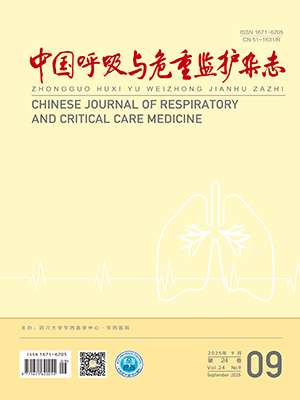Objective To analyze the clinical symptoms, imaging, laboratory tests, efficacy and other indicators of patients diagnosed as diffuse parenchymal lung disease ( DPLD) , in order to provide a reference for differential diagnosis of secondary DPLD and idiopathic interstitial pneumonia ( IIP) .
Methods Sixtytwo patients diagnosed as DPLD were retrospectively analyzed.
Results In 62 patients with DPLD, 19 patients ( 30. 6% ) were diagnosed as secondary DPLD, 42 cases ( 67. 7% ) as IIP, 1 case ( 1. 6% ) as Langerhans cell histiocytosis. The smoking rate of the DPLD patient was 33. 8% , which was higher than general population ( 29. 7% ) . 94. 7% of the secondary DPLD patients had cough, which was higher than the IIP patients ( 71. 4%) . The average age of onset of the secondary DPLD and IIP was ( 45. 9 ±16. 8) years and ( 60. 5 ±7. 7) years respectively, without significant difference ( P gt; 0. 05) . Etiological factors of secondary DPLD were dust, pets, drugs, pesticides, decoration material, etc. The secondary DPLD patients had higher response rate to steroid therapy, but had no statistical difference compared with the IIP patients ( 46. 2% vs. 37. 5% , P gt;0. 05) .
Conclusions As a group of diseases of known causes, history taking is very important for DPLD diagnosis and differential diagnosis. Clinical symptoms, imaging, and laboratory tests may provide reference for differential diagnosis of secondary DPLD and IIP.
Citation: ZHANGMingzhou,LUO Li,CHENG Xiaoming,WANG Changzheng,YAO Wei. Clinical Analysis of Sixty-Two Cases of Diffuse Parenchymal Lung Disease. Chinese Journal of Respiratory and Critical Care Medicine, 2012, 11(1): 69-72. doi: Copy
Copyright © the editorial department of Chinese Journal of Respiratory and Critical Care Medicine of West China Medical Publisher. All rights reserved




